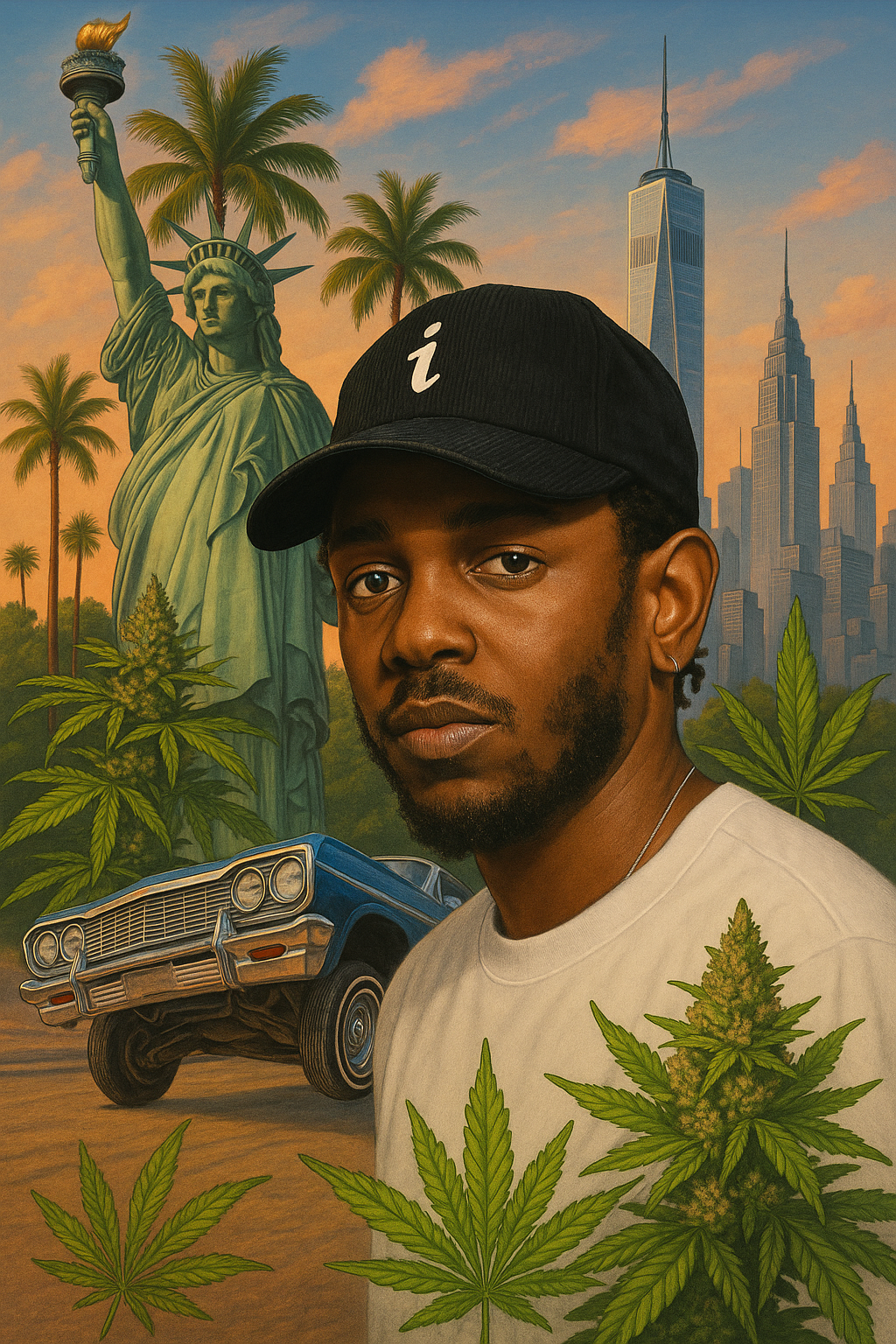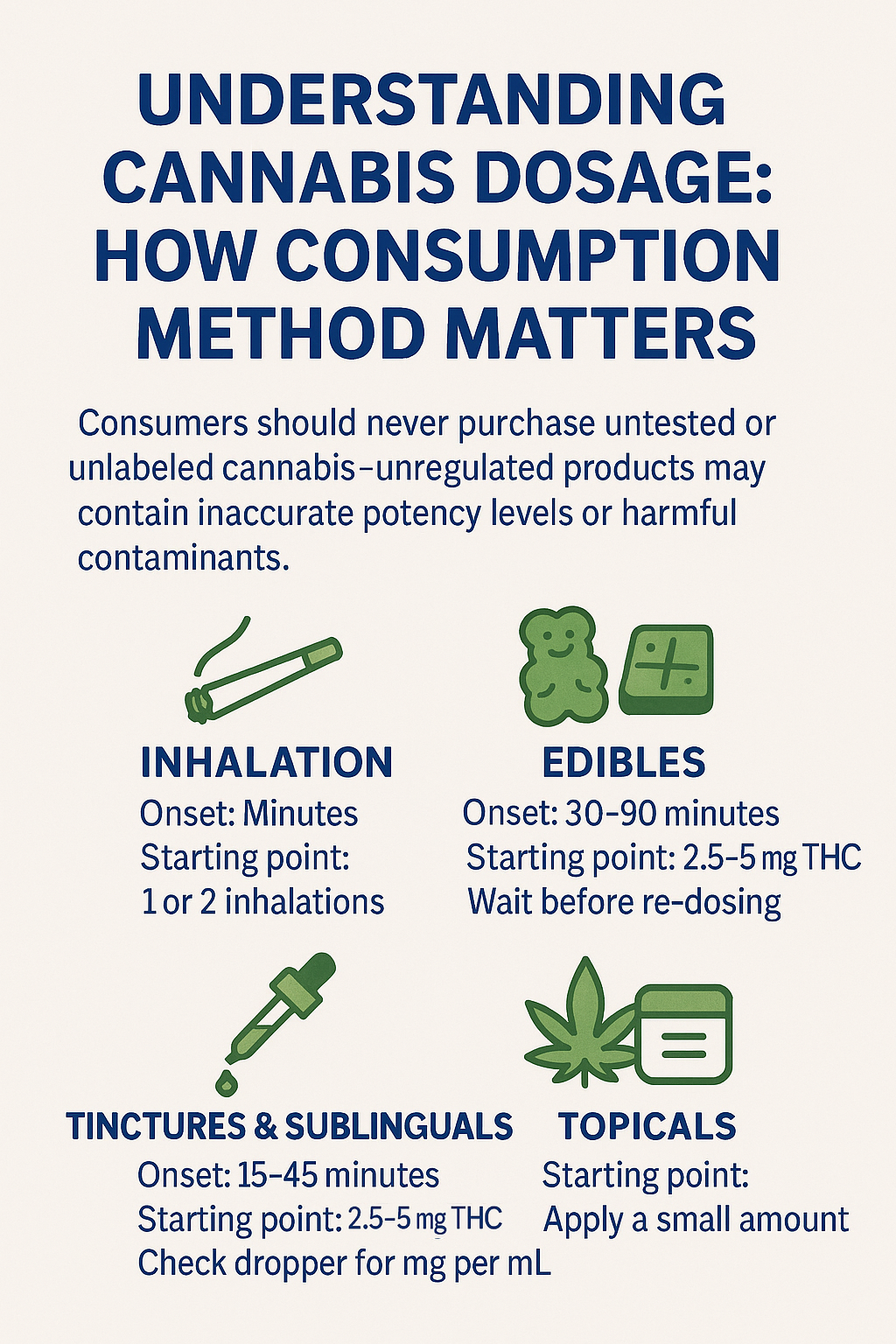Abstract:
This dissertation examines the intersections between Kendrick Lamar’s 2025 Super Bowl halftime performance and the ongoing transformation of New York State’s cannabis industry. Although separated by geography and sector—one rooted in Compton’s cultural history, the other in Albany’s regulatory corridors—both represent parallel struggles for legitimacy, equity, and control. Each transforms a historically marginalized culture (hip-hop and cannabis, respectively) into a regulated, commercialized, and publicly celebrated space. This paper argues that Lamar’s performance can be read as a cultural metaphor for the legalization process itself: the act of bringing an outlawed art into the center of the American spectacle mirrors how cannabis is being brought from the underground market into state-sanctioned legitimacy.
Introduction:
Performance, Power, and Legalization
In February 2025, Kendrick Lamar, an artist from Compton, California, headlined the Super Bowl LIX halftime show at the Caesars Superdome in New Orleans. His performance was not merely entertainment—it was an act of cultural reclamation. Through his set, Lamar transformed symbols of urban America—lowriders, Crip-walks, streetlamps—into an operatic meditation on identity, regulation, and resilience.
At the same time, across the country, New York State’s cannabis industry continued its historic evolution under the Marijuana Regulation and Taxation Act (MRTA). Like Lamar’s performance, the MRTA project aims to legitimize what was once criminalized, returning economic power to the communities most harmed by prohibition.
While the Super Bowl performance and the NYS cannabis rollout may seem unrelated, they share deep cultural, structural, and philosophical parallels:
Both involve the institutionalization of subcultures that were once considered deviant.
Both attempt to balance authentic representation with regulatory control.
And both serve as public stages where marginalized voices confront mainstream audiences, demanding equity rather than permission.
Part I: Compton as Cultural Blueprint
Roots of Rebellion and Authenticity
Kendrick Lamar’s identity is inseparable from Compton—a city historically associated with gang culture, poverty, and systemic neglect, yet also the birthplace of musical revolutions (N.W.A, DJ Quik, The Game). Lamar’s lyrical and visual narratives turn this history into artful critique. His use of Compton as a stage, even on the national platform of the Super Bowl, asserts that legitimacy can emerge from the margins.
Key idea: Compton represents both criminalization and creation.
Similarly, New York’s legacy cannabis communities embody resilience born from criminalization. Just as Lamar reclaims Compton’s story through performance, New York’s cannabis entrepreneurs seek to reclaim economic dignity through legalization.
Performance as Policy: The 2025 Super Bowl Show
Lamar’s halftime show was visually dense and politically charged. He performed amid a stylized urban tableau: dancers moved in tight formations around a lowrider; Samuel L. Jackson’s “Uncle Sam” character officiated the performance as if it were both football game and state ritual. The set referenced the Game—a recurring metaphor for systemic control.
Through this lens, the halftime show is a commentary on governance. Just as Lamar performs under the scrutiny of broadcast censors and corporate sponsors, New York’s cannabis operators perform under the gaze of the Office of Cannabis Management (OCM) and public opinion. In both, visibility is double-edged: it legitimizes but also disciplines.
Part II: The New York State Cannabis Industry—Regulating Justice
Legislative Context:
The Marijuana Regulation and Taxation Act (MRTA), passed in 2021, legalized adult-use cannabis for those 21 and older and created the Office of Cannabis Management (OCM). The law’s cornerstone is equity—specifically, to redress harms suffered by Communities Disproportionately Impacted (CDI) by prohibition.
Section 99-kk of the MRTA mandates the state to research and evaluate cannabis law impacts and, “if appropriate, make recommendations to the legislature and governor regarding possible amendments.” The statute envisions education, health, and workforce research as necessary complements to legalization.
Equity in Practice:
Through the Social and Economic Equity (SEE) framework, New York prioritizes licenses for justice-involved individuals, minority and women-owned businesses, distressed farmers, and service-disabled veterans. However, implementation challenges—capital access, municipal zoning, and bureaucratic bottlenecks—have slowed progress.
Still, a new ecosystem of partnerships among SUNY colleges, CUNY programs, and community organizations (such as NYS Cannabis Connect) seeks to bridge policy with lived experience. Their research and workforce programs mirror Lamar’s own ethos: to translate authenticity into structure without erasing origin.
Part III: Cultural and Structural Intersections
1. Legitimacy and Mainstreaming
Hip-hop’s journey from Compton’s streets to the Super Bowl stage mirrors cannabis’s journey from criminalization to legalization. In both, mainstreaming is a double negotiation: communities gain access but risk dilution. Lamar’s insistence on performing Crip-walk choreography on America’s biggest screen symbolically mirrors equity entrepreneurs demanding their place within a tightly regulated market.
2. Regulation as Choreography
In Lamar’s performance, the dancers’ regimented movements echo the tension between freedom and control—artistic spontaneity bounded by the rules of televised spectacle. Similarly, cannabis entrepreneurs operate within highly choreographed compliance systems—seed-to-sale tracking, packaging regulations, zoning ordinances—that dictate every movement of their business. The artistry lies in working within those limits without losing identity.
3. Commodification and Authenticity
When Lamar transforms the lowrider into a Super Bowl prop, he commodifies Compton culture yet also reclaims it. New York’s cannabis brands face the same question: How do you sell culture without selling out community? Authentic equity branding requires grounding business models in community benefit, not just aesthetic reference.
4. The Politics of Visibility
Lamar’s performance drew over 130 million viewers and a flurry of controversy—proof that cultural reclamation within mainstream platforms provokes discomfort. Likewise, the cannabis rollout faces public anxiety over retail visibility and normalization. Both reveal a nation grappling with its taboos: one musical, one botanical.
5. Equity as Performance
Equity, whether onstage or in statute, requires staging. Lamar staged inclusion—featuring SZA, Serena Williams, and street dancers embodying community pride. New York stages equity through license allocations, workforce surveys, and local partnerships. Yet in both, the performance of equity must be matched by substantive redistribution of power and profit.
Part IV: From Compton to the Capitol—A Framework for Legitimacy
Cultural Legitimacy as Policy Logic:
Lamar’s performance demonstrates that authenticity can coexist with institutional legitimacy if institutions allow space for original voices. In cannabis policy, this means ensuring CDI entrepreneurs are not merely symbolic participants but controlling stakeholders. Regulatory legitimacy without cultural legitimacy risks repeating colonial dynamics—extracting from communities rather than empowering them.
Economic Representation and Ownership:
Just as Lamar’s creative ownership of his masters and his company pgLang exemplifies cultural sovereignty, cannabis policy must secure economic sovereignty for equity operators—through cooperative models, grant programs, and data-driven workforce pipelines. The Hudson Valley Cannabis Workforce Blueprint, for example, aligns with this principle by treating data collection and workforce development as tools of liberation, not bureaucracy.
Performance as Pedagogy:
Both Lamar and New York’s cannabis educators deploy performance as pedagogy. The Super Bowl show teaches history through motion and metaphor; SUNY and CUNY cannabis curricula teach law, compliance, and science through experiential learning. Each uses spectacle to reshape public perception, turning education into empowerment.
Consumer Safety and Cultural Trust:
Lamar’s meticulous curation parallels the industry’s need for precision—lab testing, labeling, consumer education. Trust must be earned through transparency. Just as audiences trust Lamar’s authenticity, consumers must trust that New York cannabis products are safe, regulated, and socially responsible.
Part V: Policy and Cultural Implications
For Cultural Policymakers:
Recognize that cultural legitimacy precedes market success. Embedding equity voices in program design is akin to featuring community dancers on the national stage—it signals who truly belongs in the story.
For Industry Leaders:
Authentic branding should not appropriate, but collaborate. Partnering with community educators and equity organizations (e.g., NYS Cannabis Connect, SEEN NY, SUNY consortiums) creates legitimacy that advertising dollars cannot buy.
For Educators and Researchers:
Treat cannabis education as civic storytelling. The MRTA’s Section 99-kk mandate to “publish reports on findings” can be fulfilled not only through data but through narrative—community voices, visual documentation, and public-facing research.
For Artists and Advocates:
Continue crossing boundaries between culture and policy. Artists like Kendrick Lamar model how cultural production can articulate political theory more effectively than legislation alone.
Conclusion:
Legitimacy as Liberation
Kendrick Lamar’s Super Bowl performance and New York State’s cannabis legalization both dramatize a single struggle: the quest to turn marginalization into mandate. From Compton to the Capitol, the underlying question remains—who defines legitimacy?
In Lamar’s art, the answer is self-definition through expression. In New York’s cannabis industry, the answer must be community-defined equity. The performance and the policy, the artist and the regulator, are parts of one American experiment: transforming what was once criminal into what is now celebrated and ensuring the people who paid the price are finally paid their due.
References (APA 7th Edition):
Cannabis Control Board. (2022). Adult-Use Cannabis Legalization: MRTA Overview. Office of Cannabis Management. https://cannabis.ny.gov
Gaskins, N. (2025). Kendrick Lamar’s Halftime Revolution: A History Lesson in Storytelling. Medium.
Lamar, K. (2025, February 9). Super Bowl LIX Halftime Performance. Caesars Superdome, New Orleans.
Marijuana Policy Project. (2024). New York State Cannabis Laws and Market Trends. MPP.
Pitchfork. (2025). Kendrick Lamar’s Super Bowl Halftime Show Review.
The New Yorker. (2025). Kendrick Lamar and the Messy Art of Meta-Performance.
NYS Office of Cannabis Management. (2025). New York Social and Economic Equity Plan. https://cannabis.ny.gov/new-york-social-and-economic-equity-plan
Walters, T., & Hughes, J. (2025). Hudson Valley Cannabis Workforce Blueprint: Cultivating Careers. New York State Cannabis Connect Corp.

NYS Cannabis Connect Staff
All of the recent cannabis news and resources, all in one place.




Related News
Tiffany Walters Joins the Green Standard Alliance Board: Strengthening Cannabis Consumer Advocacy in New York
Sep 26, 2025
Dawson's Departure: Turbulence and Transition at Cannabis NYC
May 09, 2025
Growing Cannabis at Home in New York State: A Comprehensive Guide
May 02, 2025